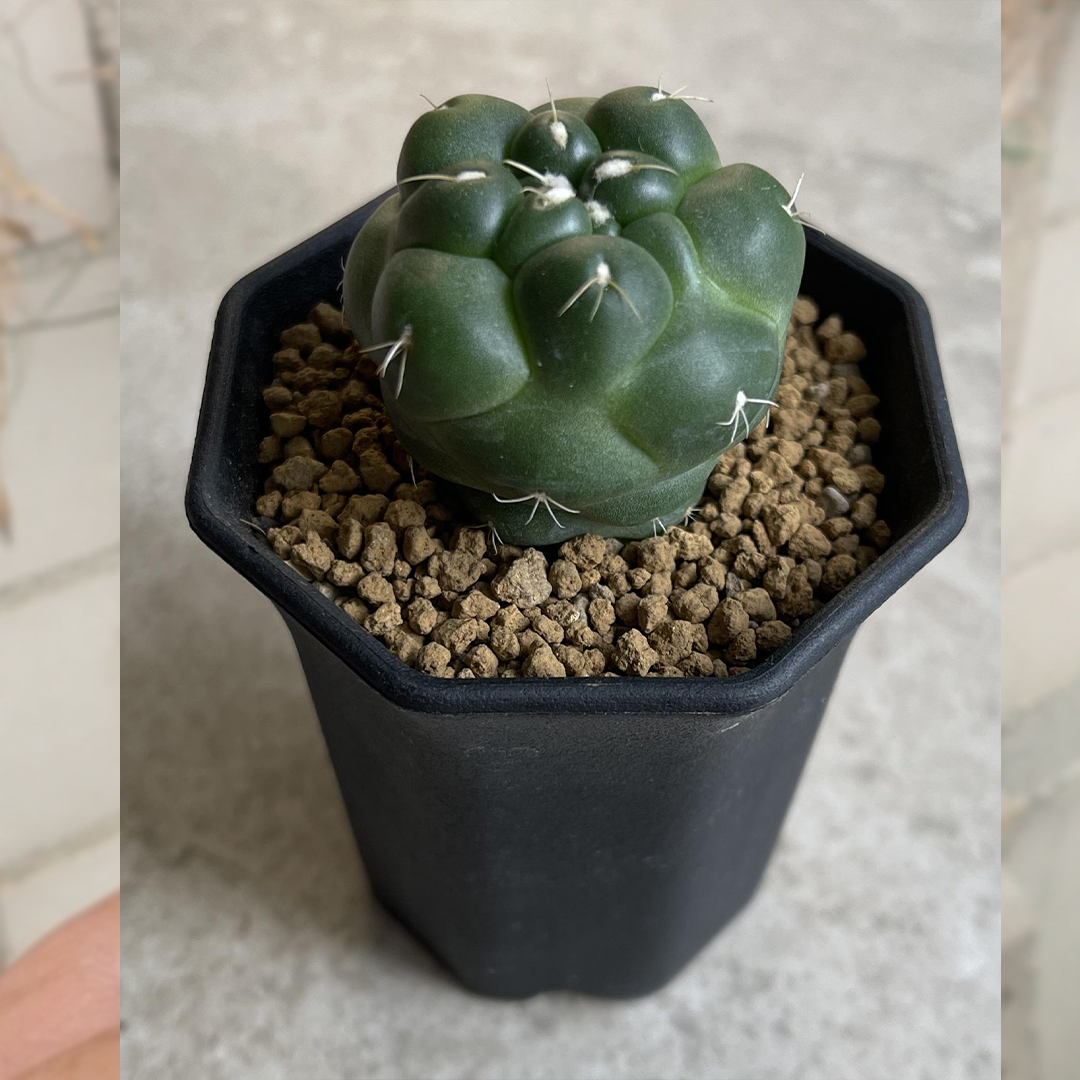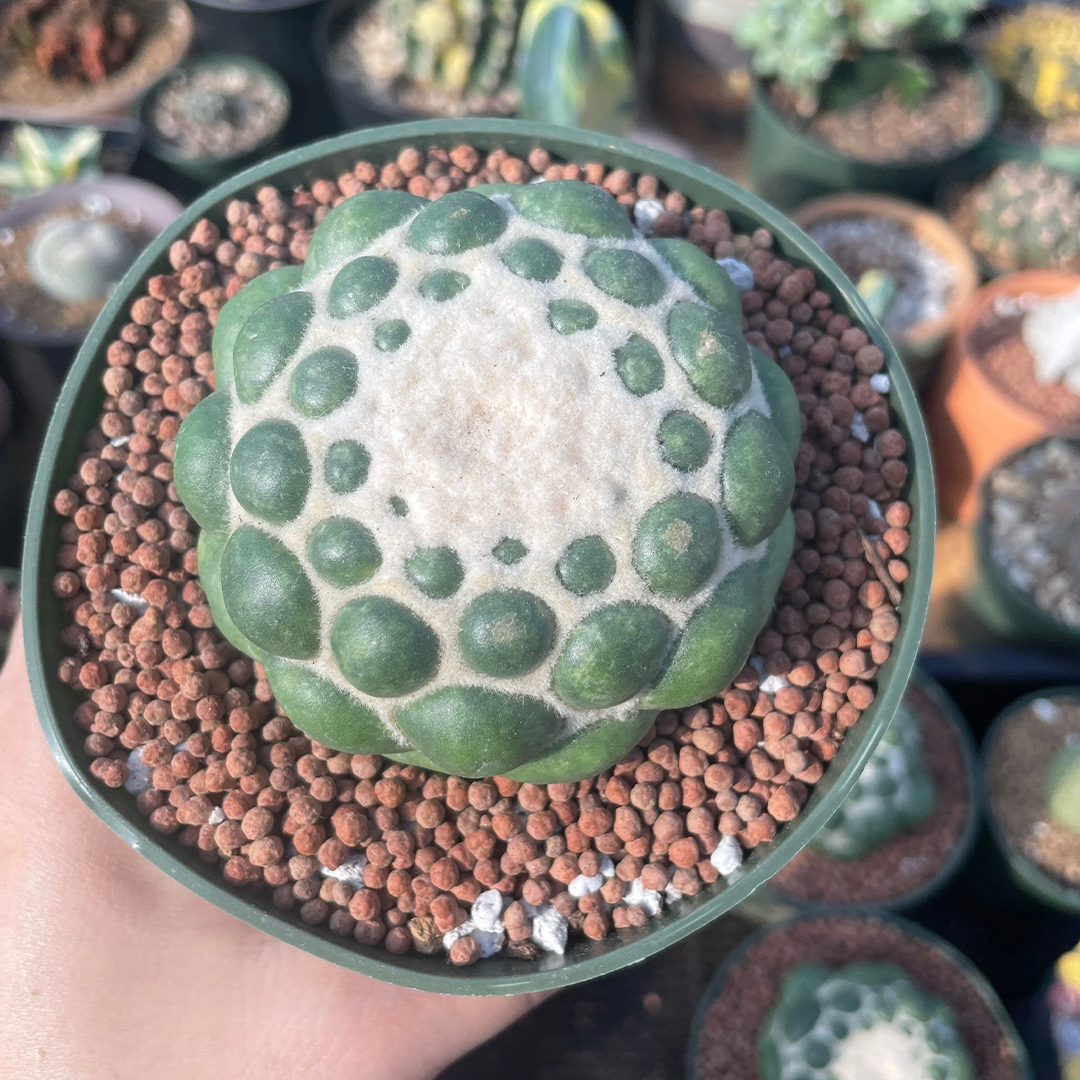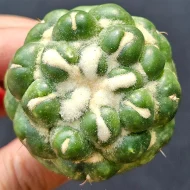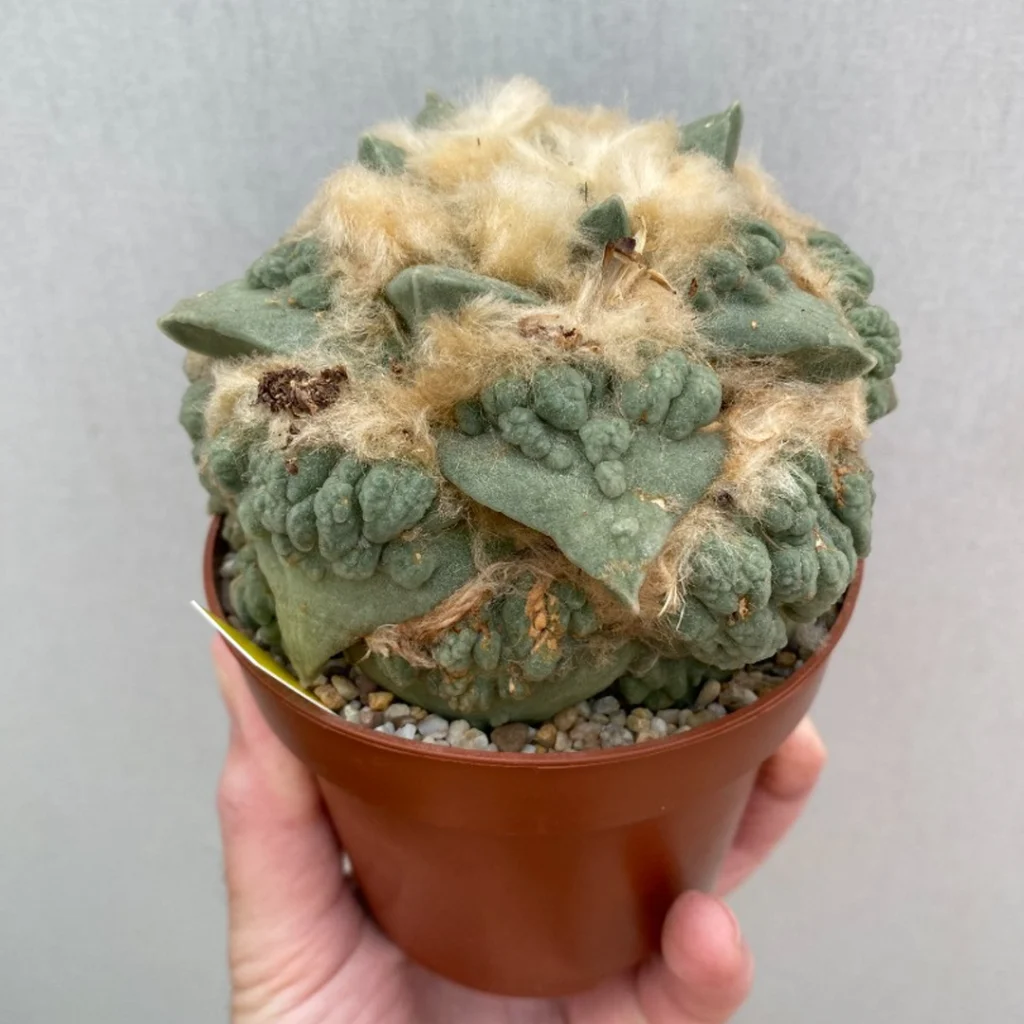Coryphantha elephantidens cv. Tanshi Zougemaru inermis is a unique cultivar of the Coryphantha genus, distinguished by its smooth, spine-free body. Unlike most Coryphantha species, which are known for their dense and sharp spines, this variety is an exception, offering a more appealing, soft, and smooth appearance. It originates from the Coryphantha elephantidens species but has been selectively bred for its spine-free characteristics.
This cultivar typically maintains a spherical shape, growing into a compact, globular form. The body of Coryphantha elephantidens cv. Tanshi Zougemaru inermis is a beautiful green with slight grayish hues, offering an elegant, clean appearance. Like many other cacti, this variety produces vibrant, funnel-shaped flowers that bloom in late spring or early summer. The flowers are typically yellow, with pink centers, contrasting beautifully against the cactus’s soft green body.
Despite the lack of spines, this cultivar retains the characteristic resilience of Coryphantha species. It is well-suited for indoor collections, desert gardens, and xeriscaping, where it thrives in dry, well-drained soil. Its unique smooth texture makes it a popular choice for cactus collectors who seek a visually distinct specimen that requires minimal maintenance.
How to Care
- Light: Provide bright, indirect light or partial sun. This cultivar thrives in good sunlight but can tolerate some shade.
- Watering: Water deeply but infrequently. Allow the soil to dry out completely between waterings to avoid rot. Water less in winter when the plant is dormant.
- Soil: Use a well-draining cactus mix or create your own mix with sand, perlite, or pumice for optimal drainage.
- Temperature: Keep in temperatures between 20°C to 30°C (68°F to 86°F). Protect from frost, as it can damage the plant.
- Fertilizer: Feed with cactus fertilizer during the growing season (spring to summer), but avoid fertilizing in the winter.
- Repotting: Repot every 2–3 years to ensure the plant has enough space to grow. Handle carefully to avoid damage to the soft body.























